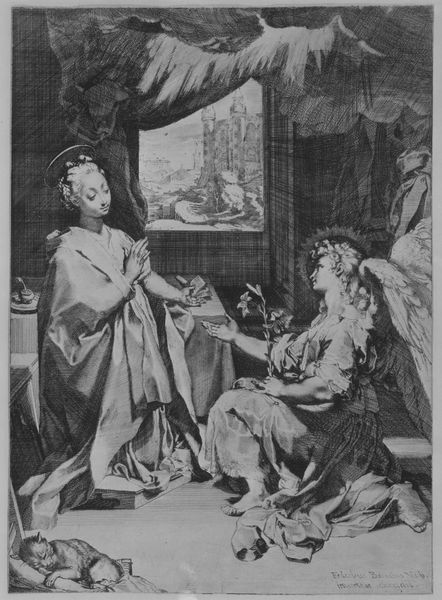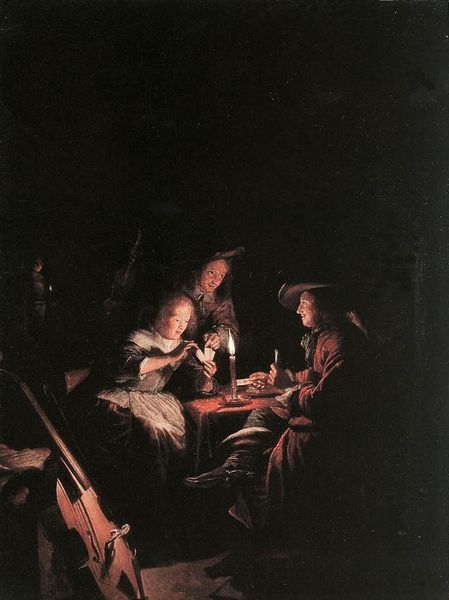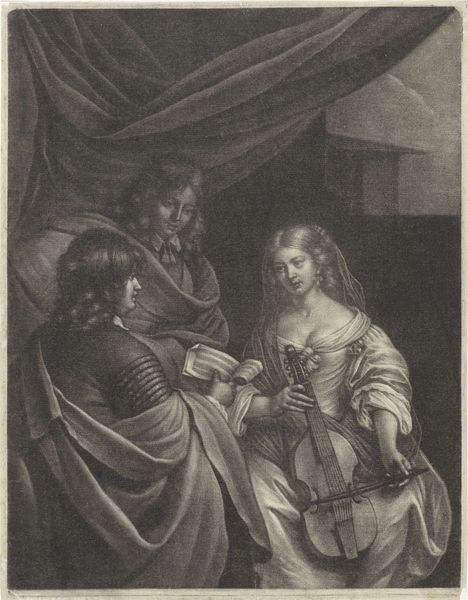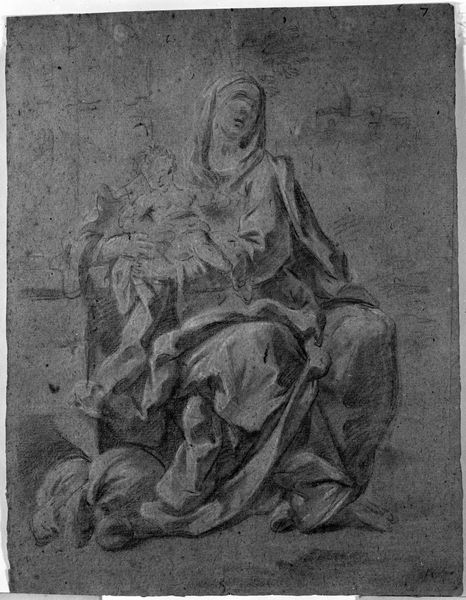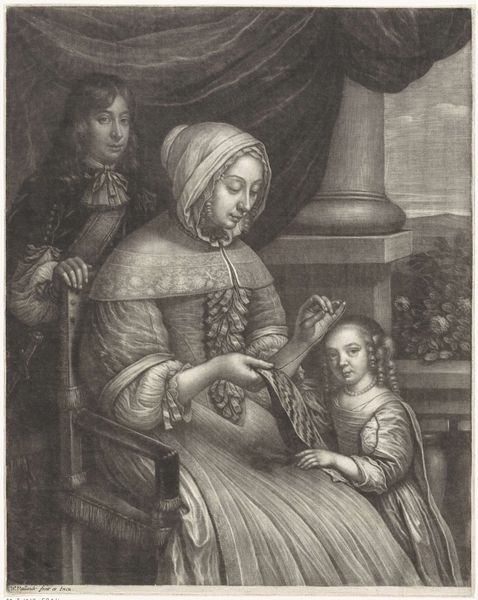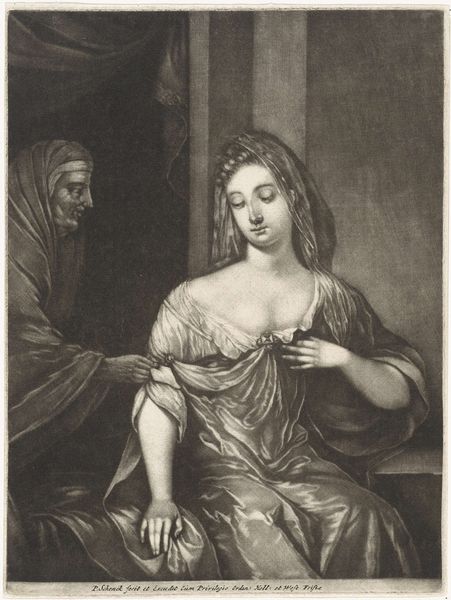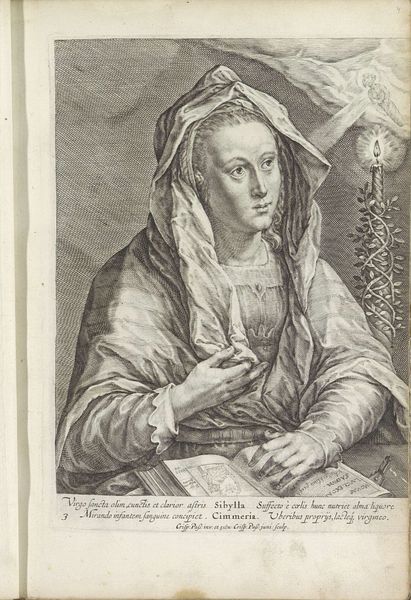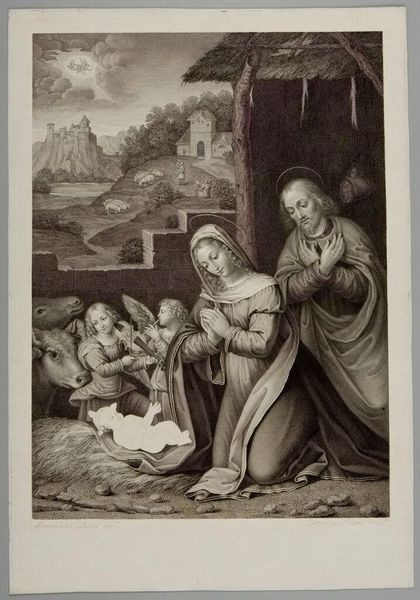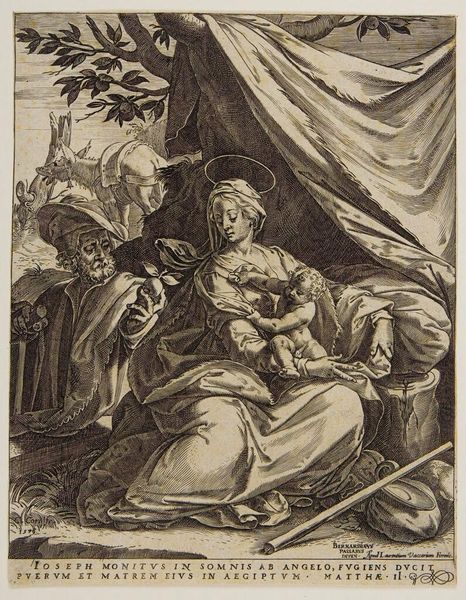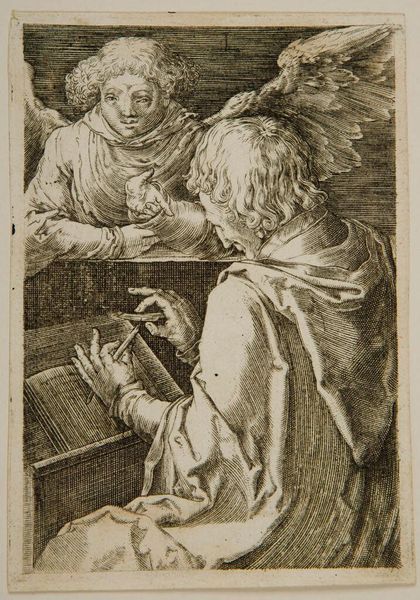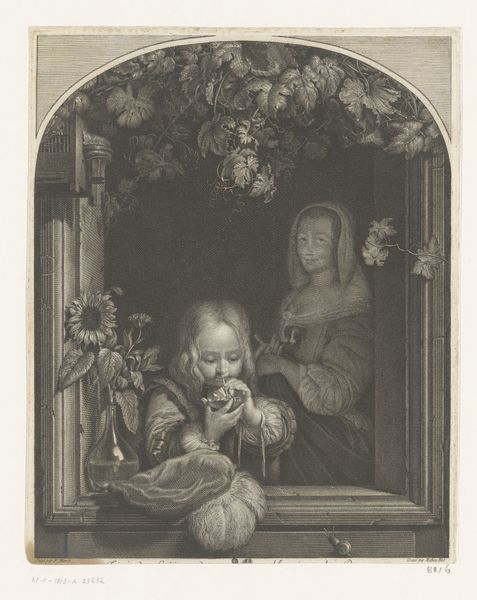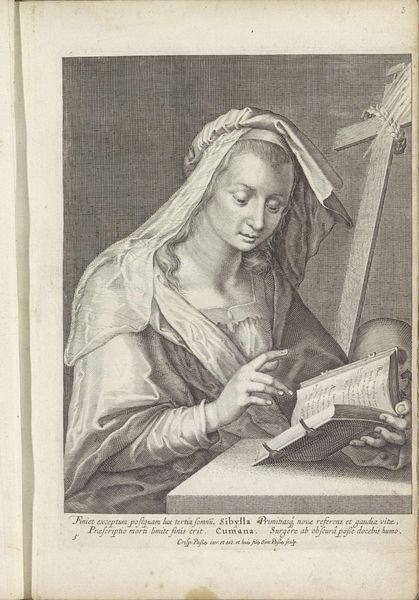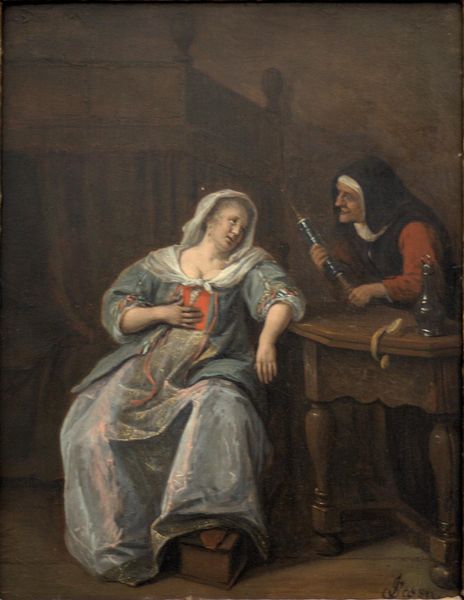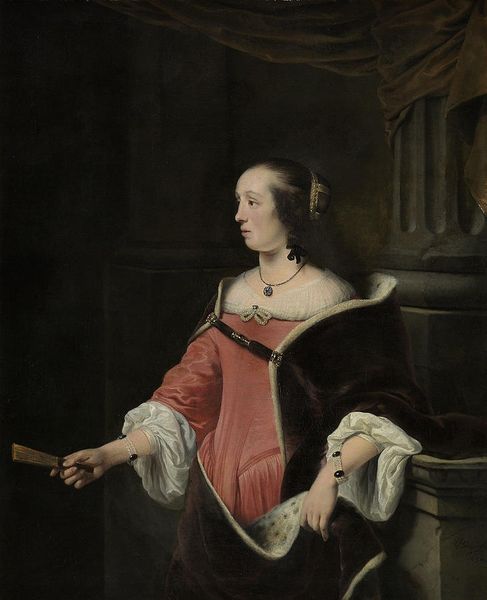
painting
#
portrait
#
baroque
#
painting
#
black and white format
#
figuration
#
black and white theme
#
black colour
#
black and white
#
genre-painting
#
realism
Dimensions: 27 cm (height) x 20 cm (width) (Netto)
Editor: So this painting is called "A Lady Sealing a Letter" by Godfried Schalcken, dating sometime between 1658 and 1706. The whole image has a very intimate feel, like we're peeking into a private moment lit only by candlelight. It also feels very staged because it is, you know, a painting. How do you read into its symbolism and meaning? Curator: I notice how Schalcken uses light and shadow to imbue the scene with significance. The candle flame isn't just illumination; it's a symbol itself. In art history, candlelight often represents ephemeral things – secrets, love, or even life itself flickering and fading. Does this reading of fleeting moments fit with your initial impression of intimacy? Editor: That makes a lot of sense! The ephemeral feeling of secrecy really comes across in her shadowed expression and careful gesture as she seals the letter. Almost as if it contains an admission of great consequence, the sharing of which comes with some anxiety. What do you see in the other figures? Curator: Look at the figure in the background. Do you think this element acts as a visual echo or reinforcement of the main figure's task, and by implication, the emotional weight of this woman's activity? We often interpret these details as conscious decisions reflecting underlying narratives related to morality, secrets, or clandestine affairs. Editor: Oh, I see! So it’s less about realistic depiction and more about building layers of meaning through these figures? Curator: Precisely. Schalcken encourages us to question the emotional landscape of the scene through recognizable symbols – a very Baroque characteristic if I might add. The use of candlelight, in particular, speaks to a shared visual language understood by audiences of that period, and perhaps, even by us today. Editor: This makes me look at the painting completely differently now, seeing it as a staged construction of coded meanings rather than just a realistic depiction of daily life. I guess it really opens a pathway to so many interpretations that remain unspoken! Curator: Exactly, and that’s where the enduring power of symbolic imagery lies. The painting transforms into a cultural artefact, constantly speaking across time through visual codes.
Comments
No comments
Be the first to comment and join the conversation on the ultimate creative platform.
